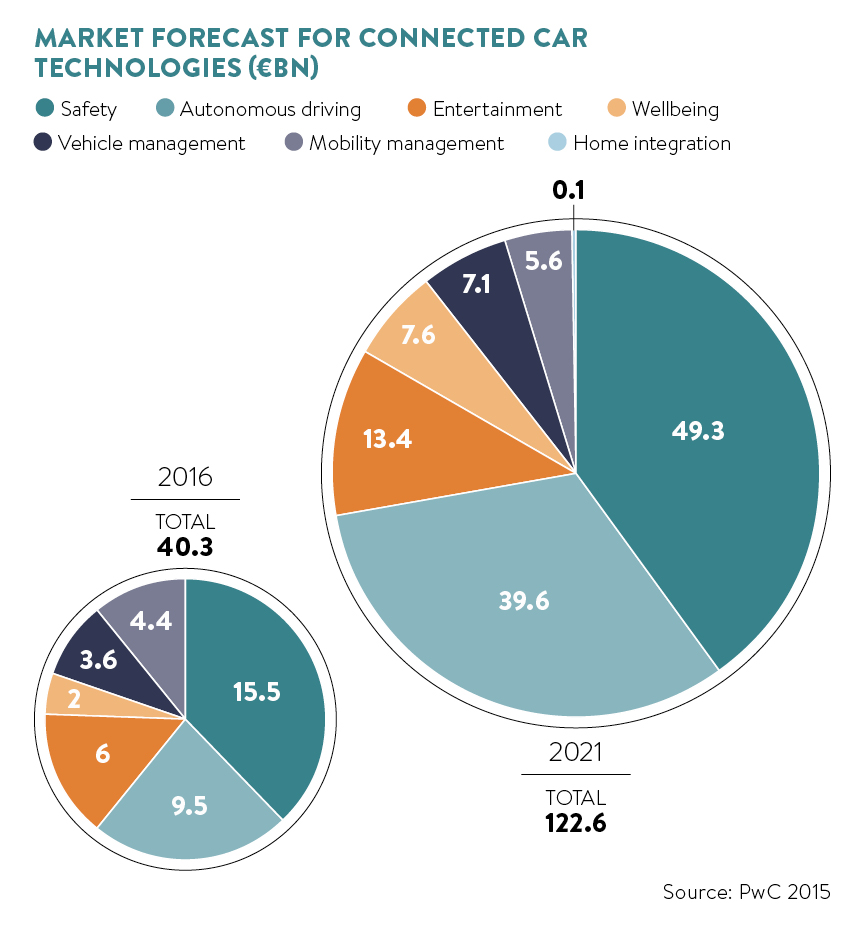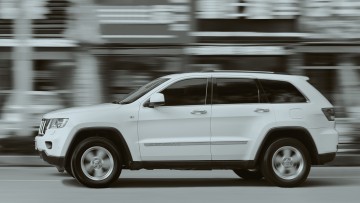Some industries are early adopters. Others wait late. The health sector, for example, takes an aeon to authorise new tech. Doctors can’t cause patients to keel over and chalk up the deaths as useful data. Banks too. A single wrong transaction and a bank can lose its reputation. So they stick with what they know.
At the other end of the spectrum is automotive. It’s the early adopter par excellence. If you want to see the future, this is your sector – it’s a decade ahead. Just look at automation. The automotive industry pioneered factory production and then robot automation.
Now we have driverless cars about to hit the roads. Ford chief executive Mark Fields said at the Consumer Electronics Show this year that we’ll see the first self-driving car on the road in 2020.
Productivity gains
Farmers are already using them. John Deere and Kinze offer farmers driverless tractors. A John Deere 7930 tractor fitted with an autonomous system by 3D Robotics can bring in a harvest and move grain by plotting location with GPS. The steering, brake, accelerator and gears move as if by magic. The routes are inch perfect, reducing overlap by 90 per cent.
If you want to see the future, this is your sector – it’s a decade ahead
The Spirit electric-diesel hybrid tractor even does without a cabin. Made by the Autonomous Tractor Corporation, the Sprint navigates by lasers and transponder radio signals. The Farmers Weekly review enthused: “So for $100,000 (£63,000) you can potentially get yourself a 200hp tractor, 24-hour farming and a lot of free time.”
In computer-aided design (CAD) automotive always leads. This is down to the vast budgets of car companies, plus the connection to motor sport. For example, in 2010 Virgin Racing became the first Formula 1 team to produce a car entirely using CAD. The wind-tunnel aerodynamic work was modelled computationally. No wind was used.

Spirit, a hybrid, driverless agriculture vehicle developed by the Autonomous Tractor Corporation
The work was done by Nick Wirth, founder of Bicester-based Wirth Research. He honed the technique on the Acura ARX-02 race car which won the American Le Mans Series in 2009. The saving? The Williams F1 team at the same time spent tens of millions of pounds on two wind tunnels.
And now? Formula 1’s governing body feared the growing power of computational fluid dynamics so this season is restricting teams to 25 teraflops of number-crunching a week. “It appears this teraflop restriction has pushed the engineers, as usual, to go to the limit of the regulations and we basically had to use some old chips,” according to McLaren racing director Eric Boullier. “The consequence of this is we are not using the latest technology in terms of computing.”
Digitising cars
The latest hyped technology is the internet of things (IoT). Consumers now have internet-connected kettles and fridges. In the car world, the IoT has been around for years. BMW and Volvo pioneered the use of mobile SIM cards to connect cars to the internet. When cars crashed, a signal was pinged to the manufacturer or emergency services.
Now the European Union is mandating all cars come with an internet connection. By 2017 every new car sold in Europe will have a SIM card able to call emergency services. And most will come with a dashboard console with downloadable apps. Consulting firm Analysys Mason forecasts that 89 per cent of new cars will be app-enabled by 2024. The research suggests revenue from embedded connectivity in passenger cars will rise from $1.3 billion in 2013 to $31 billion in 2024.

Digitising of cars will change the way traffic is routed. The UK Highways Agency is a pioneer in the adoption of big data analytics techniques to smooth the flow of traffic. The agency uses a service offered by a company called INRIX. Cars fitted with an INRIX satnav, supplemented with smartphones running an app, gives INRIX a near-perfect picture of traffic flow as it moves around the country. Within a 15-second window, it is possible to see which roads are clogged and which are running smoothly. Thus when a driver asks for the quickest way from A to B, they can be given the optimum route.
 Only it’s far cleverer than that. The INRIX system incorporates more than 100 other sources of data into the equation. Event listings are factored in. If Leicester City have a Champions League game against Barcelona at home on a Wednesday night, the system will anticipate the flood of traffic exiting the King Power stadium at 10pm. Weather reports, emergency services data, construction works and even Twitter chatter is included. If “M11” and “oil spill” flash up on Twitter, the system will know what’s going on.
Only it’s far cleverer than that. The INRIX system incorporates more than 100 other sources of data into the equation. Event listings are factored in. If Leicester City have a Champions League game against Barcelona at home on a Wednesday night, the system will anticipate the flood of traffic exiting the King Power stadium at 10pm. Weather reports, emergency services data, construction works and even Twitter chatter is included. If “M11” and “oil spill” flash up on Twitter, the system will know what’s going on.
The power of this sort of technology prompted Google to splash a billion dollars on Waze, an Israeli traffic-mapping service. Now other industries are piggy-backing on traffic mapping. The advertising market, for example, relies on counting “eyeballs” passing each street billboard. How to calculate this? The solution is to use traffic apps to see vehicle movements in real time. Thus, billboard owners can charge for each car that passes.
Rio de Janeiro in Brazil is using data from Waze to adjust public transport routes. The technology means it can understand journey planning in a way which old-fashioned car counting never could. And we are seeing estate agents use true-life journey times to market houses. It is more helpful to say a property is 20 minutes away from a train station than 12 miles. Traffic data can ensure the claim is accurate.
The automotive sector has vast revenues – global sales hit $3.3 trillion in 2014, according to consultancy Oliver Wyman – and relentless pressure to innovate. These dynamics will ensure it leads the digital world. New entrants may push the industry even further. Apple is rumoured to be launching an electric car. Tesla founder Elon Musk says it’s an “open secret”, adding: “It’s pretty hard to hide something if you hire over a thousand engineers to do it.”
Digital engineers in all sectors will be closely watching the automotive industry for many years to come.
HITTING BACK AT THE CAR HACKERS

A clever bit of investigative journalism by WIRED magazine in 2015 triggered mass panic in the car sector. WIRED’s Andy Greenberg agreed to drive a Jeep Cherokee in downtown St Louis, while two security researchers, Chris Valasek and Charlie Miller, tried to seize remote control of the vehicle via its internet connection.
Mid-journey, Mr Greenberg lost control of the car. “I spun the control knob left and hit the power button, to no avail,” he wrote. “Then the windshield wipers turned on and wiper fluid blurred the glass.” Soon the hackers cut the power to bring the car to a halt. “The experiment had ceased to be fun.”
The industry was also unamused. The hack triggered deep musings on the future of the industry. What does it mean when a malefactor with a laptop can seize control of a car, potentially turning it into a guided missile?
US defence agency DARPA has demonstrated precisely how it can weaponise hacked cars. So far there has been no real-world hacking. Solutions to hacking may include frequent over-the-air security updates, bank-level encryption and manual overrides. Until the industry proves it can deliver security from hackers, the digital transformation of the industry could be put on hold.
